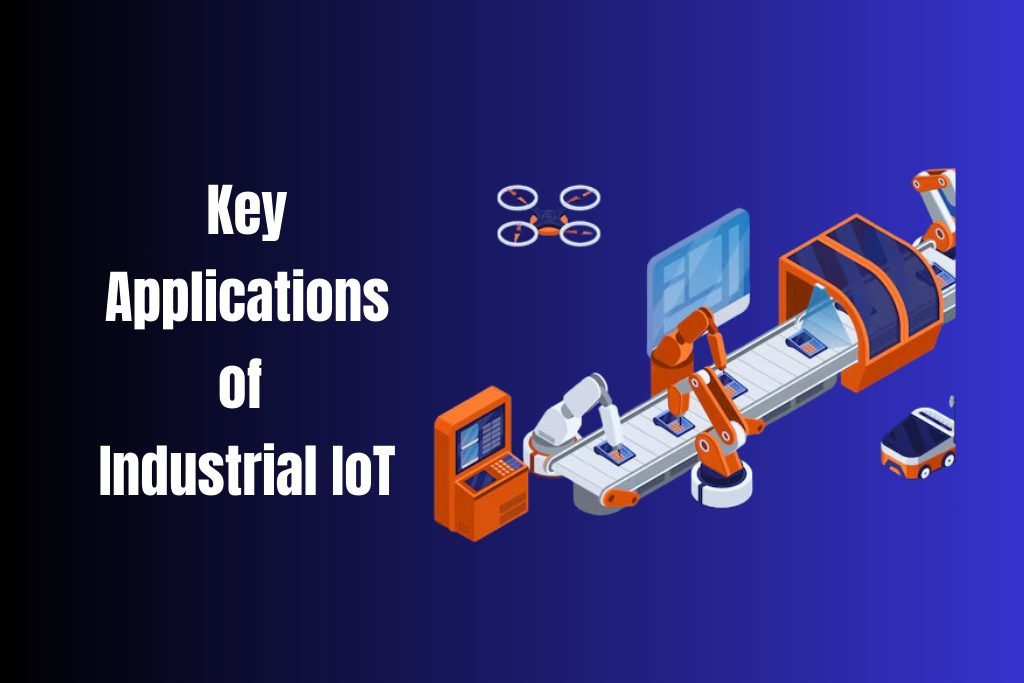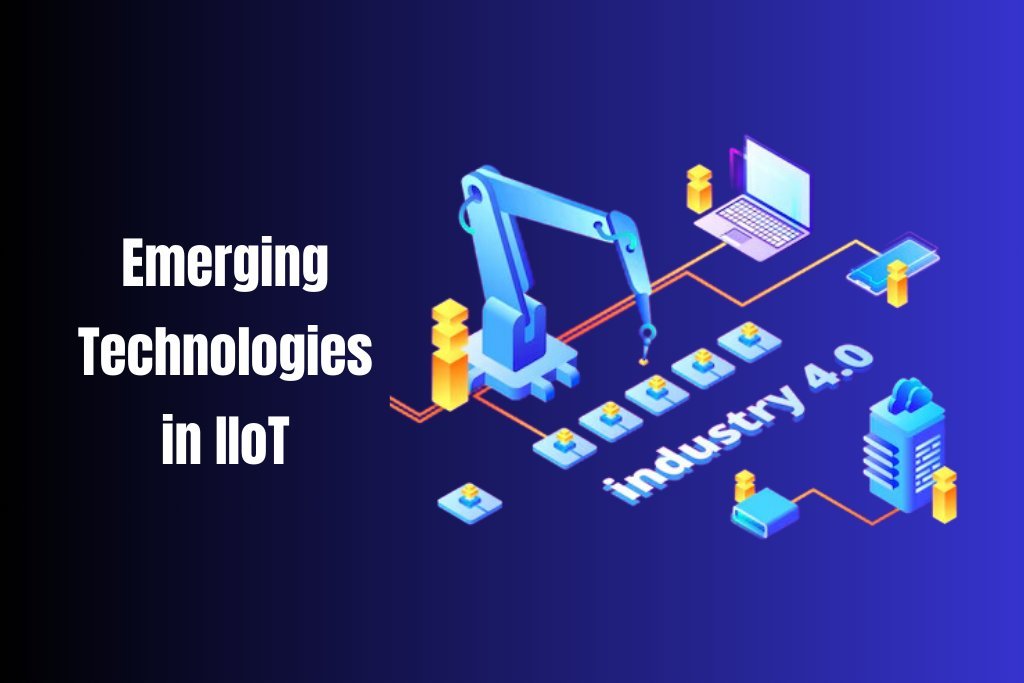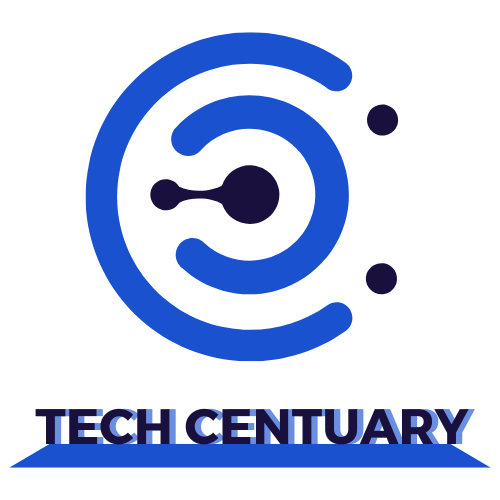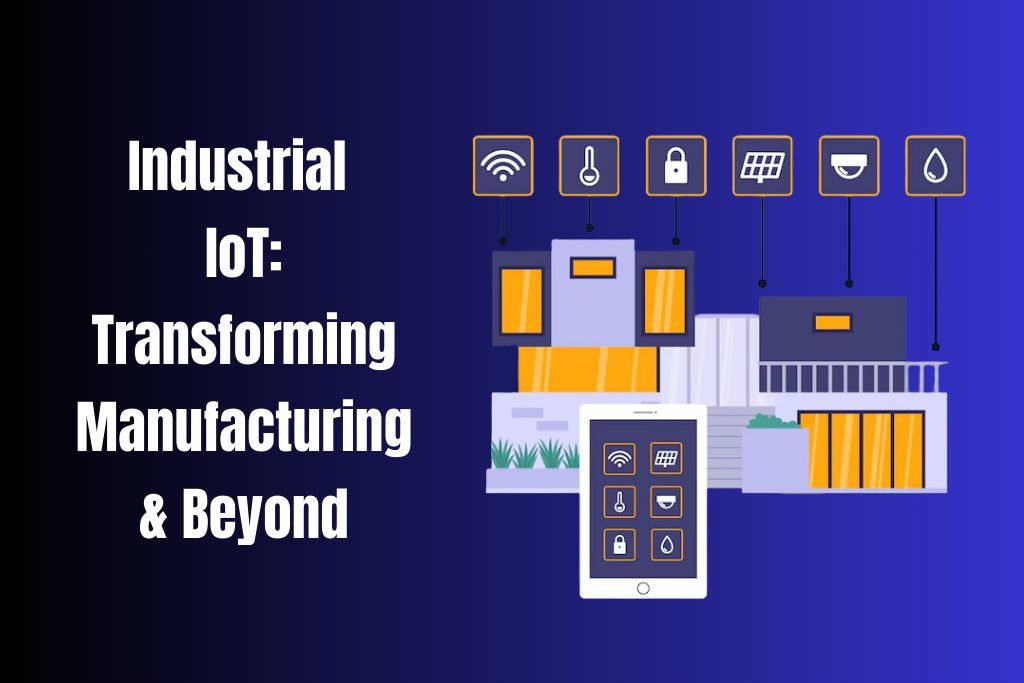The Industrial Internet of Things (IIoT) is revolutionizing the way industries operate by connecting machines, systems, and processes to the internet. Unlike Consumer IoT, which focuses on personal devices and home automation, IIoT is designed for industrial environments such as manufacturing plants, energy grids, and logistics operations. By enabling real-time data collection and analysis, IIoT improves efficiency, reduces downtime, and enhances decision-making processes.
In this article, we’ll explore how IIoT works, its key applications across industries, the benefits it offers, and the challenges it faces. We’ll also delve into emerging technologies shaping IIoT, leading companies in the field, and the future trends driving its adoption. Whether you’re looking to optimize your operations or simply understand the potential of IIoT, this guide covers everything you need to know.
Table of Contents
What is Industrial IoT (IIoT)?
Industrial IoT (IIoT) refers to the integration of connected devices and sensors in industrial settings, leveraging the Internet of Things (IoT) to collect, analyze, and act on data. These systems enable smarter operations, predictive maintenance, and automation across industries like manufacturing, energy, and logistics. IIoT differs from Consumer IoT by focusing on large-scale systems and improving operational efficiency rather than personal convenience, highlighting the transformative potential of IoT in industrial applications.
A key feature of IIoT is its ability to connect industrial machines and systems, enabling real-time communication and data sharing. For instance, sensors in a manufacturing plant monitor equipment performance and send data to a central platform for analysis. This information helps industries predict failures, reduce downtime, and improve productivity. By integrating advanced technologies like AI and 5G, IIoT is reshaping industries into more connected and efficient ecosystems.
How Industrial IoT Works
Industrial IoT integrates sensors, devices, and machines with advanced connectivity technologies to enable real-time data collection and analysis. The system operates on three key components:
- Sensors and Actuators: Sensors collect data from industrial equipment, such as temperature, pressure, and machine performance, while actuators execute commands like turning a machine on or off.
- Connectivity Protocols: IIoT devices communicate using protocols like MQTT, LoRaWAN, or 5G. These protocols ensure reliable data transmission between devices and systems.
- Cloud Computing and Edge Processing: Data collected by sensors is transmitted to cloud platforms for processing and storage. Edge computing complements this by processing critical data locally, reducing latency and improving response times.
For example, in a manufacturing plant, sensors installed on production machines monitor performance metrics in real time. Data is transmitted to a cloud platform, where it’s analyzed to identify inefficiencies or predict maintenance needs. Edge computing ensures immediate response to critical events, such as halting a malfunctioning machine.
Platforms like AWS IoT and Siemens MindSphere play a central role in managing data, enabling visualization, and integrating IIoT systems with other industrial software.
Key Applications of Industrial IoT
Industrial IoT has transformed multiple industries by introducing smart solutions for efficiency, monitoring, and automation. Below are the primary applications of IIoT:

1. Smart Manufacturing
IIoT enables the concept of “smart factories,” where machines and systems communicate seamlessly. Sensors monitor equipment performance in real-time, predicting potential failures through predictive maintenance. Automation powered by IIoT reduces human error and enhances productivity, allowing manufacturers to optimize processes and reduce downtime.
2. Supply Chain and Logistics
Real-time tracking and monitoring are central to IIoT’s impact on supply chain management. Connected devices provide live updates on inventory levels, shipment locations, and delivery conditions. This transparency minimizes delays, prevents losses, and ensures better inventory control.
3. Energy and Utilities
IIoT helps energy providers optimize operations through smart grids and connected systems. It enables real-time monitoring of energy production, distribution, and consumption. For example, IIoT sensors in wind turbines monitor performance and alert operators about maintenance needs, ensuring uninterrupted energy production.
4. Healthcare Manufacturing
Pharmaceutical and medical equipment industries use IIoT to maintain precision in production. Connected devices monitor equipment used in drug manufacturing, ensuring compliance with strict quality standards. This minimizes errors and improves product reliability.
5. Agriculture and Farming
In agriculture, IIoT powers precision farming practices. Sensors in the field collect data on soil conditions, temperature, and moisture levels. This data helps optimize irrigation schedules, reduce water wastage, and improve crop yields.
Benefits of Industrial IoT
The adoption of Industrial IoT brings numerous advantages to industries, enabling smarter operations, better decision-making, and resource optimization. Below are the key benefits:
1. Increased Efficiency
IIoT automates processes and provides real-time insights into operations, allowing industries to optimize workflows and reduce inefficiencies. For example, automated quality checks can identify production defects instantly, saving time and resources.
2. Reduced Downtime
Predictive maintenance is a standout feature of IIoT. By continuously monitoring machine health, IIoT systems detect early signs of wear and tear, preventing unexpected failures and reducing costly downtimes.
3. Improved Safety
IIoT enhances workplace safety by monitoring hazardous conditions and providing real-time alerts. For instance, sensors can detect gas leaks in chemical plants, ensuring immediate action to prevent accidents.
4. Cost Savings
By optimizing processes and reducing waste, IIoT helps industries save on operational costs. Automated energy management systems, for example, cut down on unnecessary energy consumption, directly lowering utility bills.
5. Enhanced Product Quality
Real-time monitoring ensures consistent quality control during production. Sensors detect irregularities and adjust processes accordingly, ensuring finished products meet industry standards and customer expectations.
6. Data-Driven Decision-Making
IIoT generates valuable data that industries can analyze to identify trends, optimize operations, and make informed decisions. This data-driven approach leads to better resource allocation and long-term strategic planning.
Challenges and Risks in Industrial IoT
While Industrial IoT offers significant benefits, it also comes with challenges and risks that industries must address to ensure successful implementation.
1. Security Concerns
Industrial IoT systems are highly susceptible to cyberattacks due to their interconnected nature. Hackers can exploit vulnerabilities to access sensitive data or disrupt operations. For instance, ransomware attacks on industrial systems can lead to production halts and financial losses.
2. Interoperability Issues
The lack of standardization among IoT devices and platforms often leads to compatibility issues. Devices from different manufacturers may not work seamlessly together, creating hurdles in building a cohesive IIoT ecosystem.
3. High Implementation Costs
Integrating IIoT into existing industrial setups involves significant upfront costs. This includes upgrading legacy equipment, deploying sensors, and implementing cloud-based platforms. Smaller businesses may find these expenses prohibitive.
4. Data Management Complexity
IIoT generates massive amounts of data, which can be overwhelming to manage and analyze. Industries need advanced data analytics tools and skilled personnel to extract actionable insights from this information.
5. Dependence on Reliable Connectivity
IIoT systems rely heavily on stable and fast internet connections. Connectivity issues can disrupt operations, delay data processing, and compromise the effectiveness of real-time monitoring.
6. Resistance to Change
Employees and management in traditional industries may resist adopting IIoT technologies due to a lack of understanding or fear of job displacement. Overcoming this resistance requires extensive training and clear communication about the benefits of IIoT.
Emerging Technologies in IIoT
Emerging technologies are revolutionizing Industrial IoT by addressing challenges, improving efficiency, and opening new avenues for innovation. Below are some of the key technologies shaping the future of IIoT:

1. Artificial Intelligence (AI)
AI is a cornerstone of IIoT, enabling advanced analytics and smarter decision-making. With the ability to process and analyze vast amounts of data, AI empowers industries to optimize operations and improve outcomes.
Key applications of AI in IIoT include:
- Predictive Maintenance: AI algorithms detect patterns in machine data to predict potential failures, minimizing downtime.
- Process Optimization: AI helps industries adjust production parameters in real time to enhance efficiency and reduce waste.
- Anomaly Detection: By analyzing historical data, AI can identify irregularities in operations and alert managers to potential issues.
For example, AI-powered systems in manufacturing can optimize production schedules by analyzing demand forecasts and resource availability.
2. 5G Connectivity
The introduction of 5G technology is transforming IIoT by providing faster and more reliable communication between devices. This low-latency connectivity is particularly crucial for industries requiring real-time operations and instant responses.
Benefits of 5G in IIoT:
- Real-time control of robotic systems on factory floors.
- Enhanced precision in autonomous vehicles used in logistics.
- Faster data transmission for applications like video surveillance in industrial facilities.
For example, 5G enables seamless communication between sensors and control systems in smart grids, ensuring efficient energy distribution and reducing power losses.
3. Edge Computing
Edge computing processes data locally on devices or near the source, rather than relying solely on centralized cloud platforms. This reduces latency, enhances security, and ensures faster decision-making.
Applications of Edge Computing in IIoT:
- Energy Management: Edge devices in smart grids analyze real-time data to balance energy loads and prevent outages.
- Manufacturing Automation: Machines on production lines process critical data locally, ensuring immediate responses to operational changes.
- Industrial Safety: Sensors at hazardous sites like mines or oil rigs analyze environmental conditions on the spot, triggering alerts in case of danger.
Edge computing is particularly valuable in industries where latency can lead to safety risks or operational inefficiencies.
4. Digital Twins
Digital twin technology creates virtual replicas of physical assets, processes, or systems. These replicas allow industries to simulate operations, monitor performance, and identify areas for improvement without disrupting real-world activities.
Key Benefits of Digital Twins:
- Predictive Analysis: By simulating future scenarios, digital twins help industries prepare for potential challenges.
- Process Optimization: Virtual testing of adjustments ensures minimal impact on actual operations.
- Asset Management: Continuous monitoring of equipment via digital twins helps track performance and maintenance needs.
For instance, in a manufacturing plant, a digital twin of a production line can simulate the impact of new processes or identify bottlenecks, allowing for informed decisions without halting operations.
Leading IIoT Companies and Platforms
Industrial IoT (IIoT) has seen significant contributions from companies that provide innovative platforms and solutions, enabling industries to optimize operations, improve efficiency, and drive automation. Below are the key players in the IIoT landscape and their offerings.
1. Siemens
Siemens is a global leader in industrial automation and IIoT solutions. Its flagship platform, MindSphere, connects industrial equipment to the cloud, enabling real-time monitoring, predictive maintenance, and data-driven insights. Siemens also offers advanced solutions for smart factories and energy management systems.
2. General Electric (GE)
GE’s Predix platform focuses on industrial data analysis and asset performance management. It provides tools for industries like aviation, energy, and manufacturing to optimize equipment performance, minimize downtime, and enhance operational efficiency. Predix’s robust analytics capabilities make it a preferred choice for heavy industries.
3. IBM
IBM combines its expertise in AI and IoT to offer the IBM Watson IoT platform. This solution integrates AI-driven insights with IoT data to support predictive maintenance, supply chain optimization, and enhanced asset management. IBM is particularly strong in helping industries adopt edge computing and advanced analytics.
4. Microsoft
Microsoft’s Azure IoT platform is a comprehensive suite of tools that helps industries connect, monitor, and analyze IoT devices. Azure IoT supports edge computing, digital twins, and AI integration, making it versatile for applications across manufacturing, energy, and logistics. Microsoft’s strong ecosystem also allows seamless integration with other enterprise tools.
5. Amazon Web Services (AWS)
AWS IoT Core provides industries with scalable solutions for managing IoT devices and data. The platform offers secure connectivity, real-time data processing, and advanced analytics. AWS IoT is particularly popular for its robust cloud infrastructure and integration with other AWS services, such as machine learning and analytics.
6. Honeywell
Honeywell offers IIoT solutions tailored for industries like aerospace, energy, and chemicals. Its Honeywell Forge platform focuses on improving operational efficiency, enhancing worker safety, and enabling real-time monitoring of industrial systems. Honeywell’s long-standing expertise in industrial technologies gives it an edge in IIoT applications.
7. Rockwell Automation
Rockwell Automation provides IIoT solutions for smart manufacturing and industrial automation. Its FactoryTalk platform integrates IoT data with enterprise systems, offering insights to improve production processes and reduce downtime. Rockwell’s focus on manufacturing makes it a trusted partner for industries aiming to adopt Industry 4.0 practices.
8. ABB
ABB is known for its expertise in robotics and automation, offering IIoT solutions that integrate with its advanced machinery. The ABB Ability platform connects devices, processes, and systems to provide actionable insights and improve operational performance in industries like energy, mining, and transportation.
Industrial IoT Use Cases
Industrial IoT (IIoT) is transforming various industries by enabling smarter operations, improved efficiency, and data-driven decision-making. Below are some prominent use cases that showcase the versatility and impact of IIoT.
1. Automotive Manufacturing
IIoT is widely used in automotive assembly lines, where connected robots and machines work together to streamline production. Sensors monitor equipment health, ensuring predictive maintenance to minimize downtime. Real-time data collection also helps optimize workflows, improving productivity and reducing waste.
2. Oil and Gas
The oil and gas industry relies on IIoT for pipeline monitoring, leak detection, and equipment performance tracking. IoT-enabled sensors collect data on pressure, temperature, and flow rates, providing operators with real-time insights. This reduces risks, enhances safety, and ensures compliance with environmental standards.
3. Energy Management
IIoT plays a critical role in energy plants by optimizing power generation and distribution. Smart grids use connected devices to balance loads, prevent outages, and integrate renewable energy sources like solar and wind. For example, IIoT in wind farms monitors turbine performance, ensuring maximum efficiency.
4. Logistics and Supply Chain
Connected devices in logistics provide real-time tracking of shipments, inventory levels, and delivery conditions. IIoT enables automated warehouse operations with IoT-powered robots and ensures timely replenishment of inventory. Companies also use IIoT to monitor cold storage conditions for perishable goods.
5. Agriculture
IIoT enhances agricultural practices through precision farming. Sensors monitor soil moisture, weather conditions, and crop health, allowing farmers to make informed decisions. Automated irrigation systems adjust water levels based on real-time data, improving yield while conserving resources.
6. Healthcare and Pharmaceuticals
In the pharmaceutical industry, IIoT ensures precision in drug manufacturing by monitoring equipment and maintaining strict quality standards. IoT-enabled devices track production metrics, minimizing errors and ensuring compliance with regulations.
Future Trends in Industrial IoT
Industrial IoT (IIoT) continues to evolve, with new trends shaping its adoption and capabilities. The future of IIoT lies in deeper integration with advanced technologies, improved efficiency, and a focus on sustainability. Here are the key trends expected to influence IIoT in the coming years:
1. Greater Adoption of Industry 4.0 Practices
Industries are increasingly aligning with Industry 4.0, which emphasizes smart factories, interconnected systems, and automation. IIoT will play a central role in realizing this vision by enabling seamless communication between machines, systems, and humans. This trend will lead to more efficient and flexible production processes.
2. Expansion of Digital Twin Technology
The use of digital twins is expected to grow significantly. Industries will rely on these virtual replicas to simulate operations, test scenarios, and optimize performance without disrupting real-world activities. As the technology advances, digital twins will become more precise and accessible.
3. Integration with Artificial Intelligence (AI)
AI will become more embedded in IIoT systems, enabling predictive analytics, anomaly detection, and intelligent decision-making. Industries will leverage AI to enhance automation, reduce waste, and improve operational efficiency. This trend will also drive the development of autonomous industrial systems.
4. Widespread Adoption of 5G Networks
The expansion of 5G connectivity will accelerate IIoT adoption by providing faster and more reliable communication. Industries will benefit from ultra-low latency and real-time data transfer, making applications like remote control of machinery and real-time monitoring more feasible.
5. Focus on Sustainability
IIoT will increasingly support sustainability initiatives by optimizing resource usage and reducing waste. Smart energy management systems and eco-friendly industrial practices will become standard, driven by IIoT’s ability to monitor and control operations in real-time.
6. Enhanced Security Frameworks
As IIoT adoption grows, so will the need for robust security measures. The future will see advancements in device authentication, encrypted communication, and threat detection systems to address the vulnerabilities of connected networks.
7. Development of Open Standards
Interoperability issues have long been a challenge in IIoT. Efforts to develop universal standards and protocols, such as Matter, will help industries create more cohesive ecosystems, enabling devices from different manufacturers to work seamlessly together.
Conclusion
Industrial IoT (IIoT) is at the forefront of transforming industries by connecting machines, systems, and processes for smarter and more efficient operations. It has redefined manufacturing, logistics, energy management, and other sectors by enabling real-time monitoring, predictive maintenance, and data-driven decision-making. With its ability to optimize resources, enhance productivity, and improve safety, IIoT has become a cornerstone of modern industrial practices.
As technologies like AI, 5G, edge computing, and digital twins continue to evolve, the potential of IIoT will only grow. These advancements will address current challenges, such as interoperability and security, while opening up new opportunities for innovation. Future trends point toward deeper integration with Industry 4.0, increased sustainability efforts, and smarter automation.
Industrial IoT represents not just a technological shift but also a strategic advantage for industries aiming to stay competitive in an evolving market. As businesses embrace IIoT, they are paving the way for a smarter, more connected industrial future.
FAQs
1. What is Industrial IoT (IIoT)?
Industrial IoT refers to the use of connected devices and systems in industrial settings, such as manufacturing, energy, and logistics. These devices gather and analyze data to optimize operations, improve efficiency, and enable automation.
2. How is IIoT different from Consumer IoT?
While Consumer IoT focuses on personal devices like smartwatches and home gadgets, IIoT is designed for industrial environments. IIoT deals with larger-scale systems, such as factory machinery and energy grids, and prioritizes efficiency, safety, and reliability.
3. What are the key benefits of IIoT?
IIoT enhances operational efficiency, reduces downtime through predictive maintenance, improves safety, and enables data-driven decision-making. It also helps in optimizing resources, saving costs, and ensuring better product quality.
4. Which industries use IIoT?
IIoT is widely used in industries like manufacturing, energy, logistics, agriculture, and healthcare. For instance, smart factories use IIoT for automation, while the energy sector relies on IIoT for optimizing power grids.
5. What technologies power IIoT?
IIoT is powered by technologies like sensors, connectivity protocols (5G, MQTT), cloud computing, edge computing, artificial intelligence, and digital twins. These technologies work together to enable real-time data collection, analysis, and action.
6. What are the challenges of adopting IIoT?
Challenges include security vulnerabilities, high implementation costs, interoperability issues, and the complexity of managing large amounts of data. Reliable connectivity and employee training are also critical factors for successful adoption.
7. What is predictive maintenance in IIoT?
Predictive maintenance involves using IIoT sensors and analytics to monitor equipment health and predict potential failures before they occur. This helps industries avoid unexpected downtime and reduce maintenance costs.
8. How does 5G impact IIoT?
5G provides faster data speeds, lower latency, and more reliable connectivity, making real-time communication between devices seamless. It is particularly beneficial for applications like remote machine control and real-time monitoring.
9. What are digital twins in IIoT?
Digital twins are virtual replicas of physical assets, systems, or processes. They allow industries to monitor performance, simulate scenarios, and optimize operations without disrupting actual systems.
10. What is the future of IIoT?
The future of IIoT includes deeper integration with Industry 4.0, advancements in AI and edge computing, widespread adoption of 5G, and a focus on sustainability. These trends will further enhance the efficiency and impact of IIoT systems.

